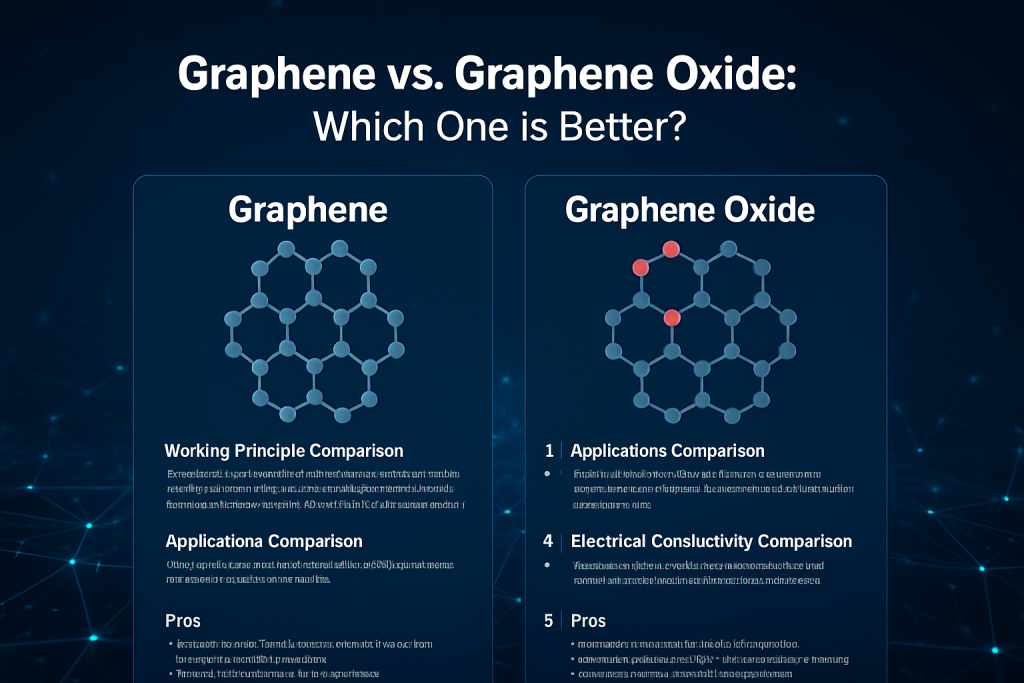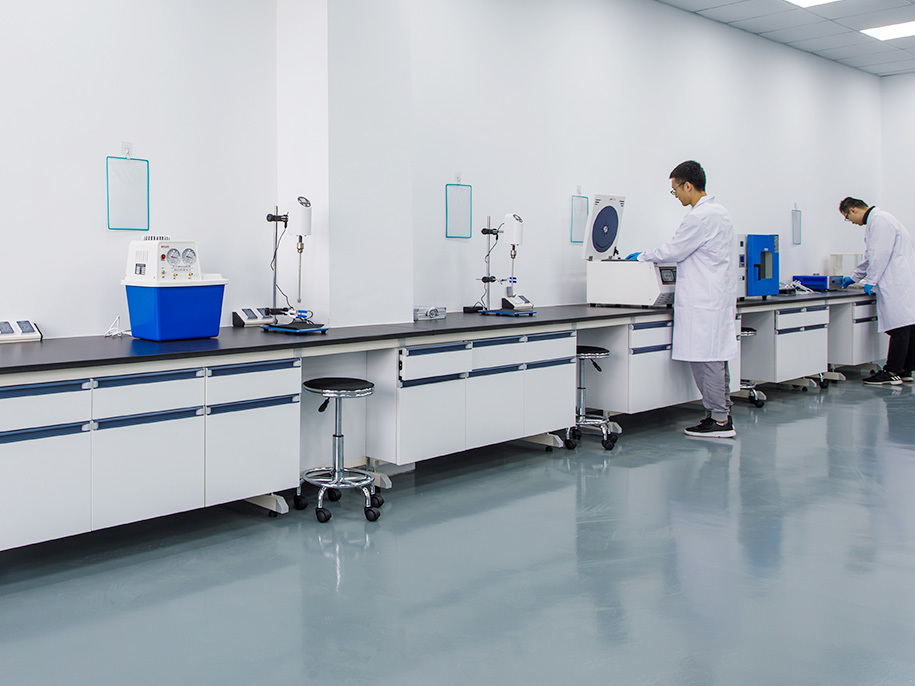Graphene vs. Graphene Oxide: Which One is Better?
Working Principle Comparison
Ever wondered how does graphene work?
Graphene is a single layer of carbon atoms tightly packed into a two-dimensional honeycomb lattice. It exhibits extraordinary electrical conductivity, thermal conductivity, mechanical strength, and flexibility. It acts as a conductor or additive in materials to enhance conductivity, mechanical reinforcement, and chemical stability.

Now, how does graphene oxide work?
Graphene oxide (GO) is graphene modified with oxygen-containing functional groups such as hydroxyl, carboxyl, and epoxy groups. These functional groups allow GO to disperse in water and other polar solvents, and they make GO a good candidate for chemical functionalization. Although it is electrically insulating in its raw form, it can be reduced to form reduced graphene oxide (rGO), which partially restores conductivity.
Applications Comparison
Graphene is widely used in electronics, batteries, supercapacitors, composite materials, sensors, coatings, and biomedical applications. It is ideal for high-performance conductive and mechanical reinforcement applications.
Graphene Oxide, due to its dispersibility and reactivity, is used in fields such as water treatment, flexible electronics, biomedical drug delivery, inks, coatings, and as a precursor to reduced graphene oxide in various chemical processes.
Structure & Composition Comparison
Graphene: Pure carbon, with a planar sp² hybridized carbon network and no functional groups.
Graphene Oxide: Modified carbon with a disrupted sp² lattice due to oxygen functional groups. Contains C–O, C=O, and O–H bonds, making it hydrophilic and chemically active.
Electrical Conductivity Comparison
Graphene: Extremely high electrical conductivity (~10⁶ S/m). Suitable for conductive films, electrodes, and interconnects.
Graphene Oxide: Poor electrical conductivity due to disruption in π-conjugation. Needs reduction to rGO for improved conductivity.
Mechanical Properties Comparison
Graphene: Ultra-high strength (~130 GPa) and elasticity. Can significantly improve the mechanical properties of composites.
Graphene Oxide: Lower mechanical strength compared to graphene but still beneficial in reinforcing polymers and films. Easier to integrate into various matrices.
Thermal Conductivity Comparison
Graphene: Excellent thermal conductivity (~5000 W/m·K).
Graphene Oxide: Much lower thermal conductivity due to lattice defects and oxygen content.
Dispersibility & Processability Comparison
Graphene: Hydrophobic, difficult to disperse in water or polar solvents without surfactants or functionalization.
Graphene Oxide: Hydrophilic and easily dispersible in water, making it ideal for solution processing and coating applications.
Cost & Scalability Comparison
Graphene: Higher production cost, especially for single-layer or few-layer high-purity graphene.
Graphene Oxide: Easier and cheaper to produce at scale from graphite using chemical oxidation methods (e.g., Hummers’ method).
Pros & Cons Comparison
Graphene
Pros
• Excellent conductivity (electrical & thermal)
• High mechanical strength
• Ideal for high-performance electronic and energy applications
• Chemically stable
Cons
• Expensive and difficult to mass-produce in pure form
• Poor dispersibility in water
• Limited surface functionalization without oxidation
Graphene Oxide
Pros
• Easy to produce in large quantities
• Water-dispersible, suitable for solution-based processing
• Chemically reactive – good for functionalization
• Biocompatible and useful in biomedical applications
Cons
• Poor conductivity in raw form
• Lower mechanical and thermal performance than pristine graphene
• Requires reduction for electrical applications
Ultimately, the choice between graphene and graphene oxide depends on your specific application needs. If high conductivity and mechanical strength are your priorities, graphene is superior. If you’re working on coatings, dispersions, or need a chemically functionalizable platform, graphene oxide is your go-to material.
Both materials continue to play a pivotal role in advancing technologies across fields like energy storage, flexible electronics, and advanced composites. Understanding their distinct properties ensures optimal performance in real-world applications.

